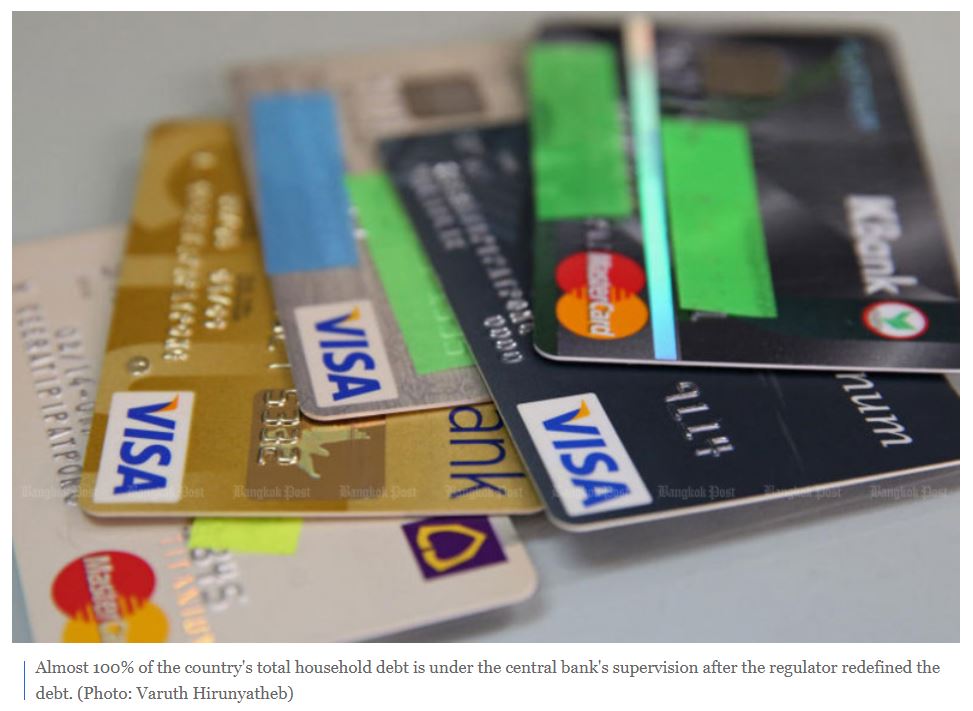Thailand: Central bank aims to tackle debt crisis
The Bank of Thailand aims to cut persistent debt in order to reduce the burden of households and help consumers exit from the debt cycle faster.
The central bank will set out three guidelines for responsible lending (RL), risk-based pricing (RBP), and macroprudential policy this month, as a move to help solve the country’s household debt problem.
The regulator will then hold a public hearing on the three guidelines, said Suwannee Jatsadasak, the central bank’s assistant governor for the supervision group.
Under the RL guideline, the central bank will encourage financial institutions to reduce persistent debt in the household sector, especially revolving loans.
“The central bank does not want to see the household sector staying in the debt cycle for a long time. Given too long a debt cycle, consumers may shoulder too much of an interest burden compared with principle loans,” said Ms Suwannee.
“With this scenario, it would be unfair to some retail borrowers amid the swelling household debt. However, the central bank will define persistent debt after the hearings.”
According to the household debt solution framework, the central bank expects to initially implement official guidelines for RL and RBP to supervise the responsible lending of financial institutions. However, the central bank would take more time to consider the debt-service ratio (DSR) guideline and make a decision as to whether to implement it or not.
“Given a study of DSR regulations overseas, the Bank of Thailand found that the measure affects the loan accessibility of individual borrowers in some countries. So we need to prudently study the measure,” Ms Suwannee said.
Almost 100% of the country’s total household debt is currently under the central bank’s supervision after the regulator redefined the debt.
Following the redefinition, the amount of household debt in the first quarter of this year rose to around 16 trillion baht, or 90.6% of GDP, compared with 86.3% in the fourth quarter of last year.
In addition, Ms Suwannee said special mention (SM) loans, in which borrowers fail to make payments within 30-90 days of the due date, for autos rose to 13.8% of total outstanding loans.
However, the majority (around 60%) of total SM loans are able to be paid back, while only 10% are classified as non-performing loans.
Nonetheless, the rising trend in interest rates would not significantly impact retail borrowers as increases in loan rates have been lower than the policy rate hikes.
If the policy rate increases by 1 percentage point, a bank’s minimum retail rate would increase by 0.5 percentage points on average.
Ms Suwannee said the Bank of Thailand was ready to hold discussions with the economic team of the new government if it wanted to find a solution to the high interest burden faced by borrowers.
Source: https://www.bangkokpost.com/business/2604951/central-bank-aims-to-tackle-debt-crisis


 Thailand
Thailand




